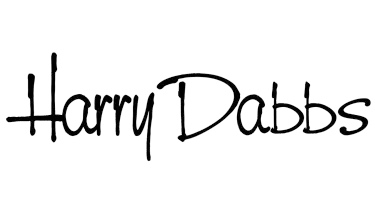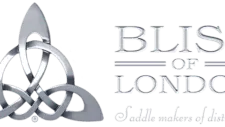No foot, no horse!
The old saying still rings true today… The more we learn about horses’ feet and the connection between healthy feet and a healthy upper body, the more we realise how important it is to consider our horse’s feet in relation to their general health and wellbeing.
The more we expect of our horses and the more we want them to have long, healthy, and pain-free lives, the more we need to attend to all aspects of their care.
A horse might cope with not having his or her feet trimmed on a regular basis and even not at all, but coping is not the same as thriving, and a lack of hoof care will shorten your horse’s working life quite considerably.
Here are some hints at what a healthy foot should look like and the cascade effect that takes place when a horse is ‘not comfortable’ standing on his feet.
Good feet, good health
Horses are flight animals and spend most of their day standing up with a few short deep (REM) sleep intervals laying down (ideally). So here is the first clue, if a horse is too sore or stiff to lay down or get back up, he or she won’t be getting enough sleep.
Sleep deprivation compromises health and wellbeing and can lead to horses literally falling (collapsing) into REM-sleep and injuring themselves.
Horses need healthy, pain-free feet to hold the rest of their body comfortably, but also so they can get up from a laying position effortlessly.
Getting enough sleep is one reason why our horses need to have good feet. But let’s look into a more complex situation.
cascading effect
Let’s say we have a foot problem that is only mild and not bad enough to get much attention from the horse’s owner or hoof care provider.
The horse has to stand on that foot most of the day and, if he is even mildly uncomfortable, will already be compensating for the problem.
When we talk about discomfort, we have to remember that horses are amazing at hiding pain and this can lead us into a false sense of security.
Let’s say we have a horse that is feeling pain in the right front foot. Even a mild discomfort will cause him to shift more weight onto the left front foot. Due to the weight shift, the horse is going to change how he uses his shoulders. This, in turn, is going to affect your saddle fit; your saddle might start slipping to one side. You might feel like you are riding longer in one leg and constantly needing to correct your position.
If you stand behind your horse, you will see that his shoulders are uneven even though the horse is standing square.
This posture change is not just complicating your ride, because hoof tissue is so malleable, the uneven weight distribution will soon change the shape and size of the front feet. One foot might become flatter and the other one more upright. This is known as a high heel – low heel syndrome.
Another thing that results from the uneven weight distribution through the front legs is that the horse has to twist his ribcage. This puts strain on both, the musculo-skeletal system and more specifically, the horse’s spine. And the increase in muscle tension through the ribcage is going to affect the horse’s breathing pattern.
This breathing restriction will in turn affect things like muscle health and the health of the horse’s nervous system.
The increase in ribcage tension is also going to affect the digestive system through the reduced movement of the ribcage and the diaphragm. Less mobility in the digestive system is known to put your horse at a higher risk of colic and will also reduce the way the horse can utilise the food he eats.
Depending on the predisposition of the individual horse, it may be really hard to keep weight on, or he could become weight loss resistant.
So let’s look at the horse again.
We might see that he starts to carry his head too high to try and keep the weight off the front legs a little. He will also slightly twist or tilt his head. The tilt will affect the poll – the temporo-mandibular joint or TMJ – and this could affect the way he holds the bit in his mouth!
Now you have a horse that struggles to keep a steady rein contact, that wears his teeth unevenly and doesn’t really like having his poll touched. He may become head shy.
The higher, crooked head carriage also affects the rest of the spine due to mechanical pressures. The head and neck go up, the thoracic spine goes down and the horse gets a bigger wither dip and begins to lose his topline.
He may then start to roach through the lumbar spine and change his pelvis angle. This will change the way he can place weight through the hind legs and now you will start to see the hind feet change and a tendency to crush the heels and get long in the toes.
Did you notice how every change was connected and there was every system was impacted?
This is what holistic health is all about. And it is why horse health care providers – farrier/trimmer, vet, dental vet, physio or therapist – need to work as a team and lean on each other.
Your horse’s feet are one of the keys to long-term health and soundness. This is a good reason why farriers and trimmers must always treat the feet in relation to the biomechanics and upper body health and function.
Over to you…
As your horse’s owner and advocate, you should be doing it too. So go out to your own horse and take a closer look at his or her feet.
You don’t need to be a farrier or a vet to understand the signs of bad hoof health and what they can mean for your horse. Many of the visual signs are easy to identify, especially when we think of the ideal hoof as our benchmark.
A healthy hoof should be almost symmetrical in shape with a smooth, even, cone-shaped exterior wall.
The sole should be naturally concave from the outer wall to the junction of the apex of the frog and sole.
The white line should be a semi-opaque, blueish colour with an even width around the circumference of the wall and finish two-thirds the way down the length of the frog.
The sole of the hoof should connect to the white line at the same height as the hoof wall and the bars should be straight and in line with the frog.
The frog should be a healthy wedge or triangle shape whose ground surface finishes just below (viewed from underneath) the level of the heels.
These are the signs of a healthy hoof, and if your horse’s hooves are different, there is usually a reason why. So start asking questions and looking for connections.
Join our FREE online course to learn more about hooves
SOURCE: HORSES & PEOPLE




